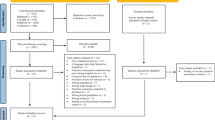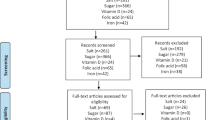Abstract
Health-care systems are currently facing tremendous budget constraints resulting in growing pressure on decision makers and health-care providers to obtain the maximum possible health benefits of the resources available. Choices have to be made, and health economics can help in allocating limited health-care resources among unlimited wants and needs. Attempts to achieve cost reductions often focus on severe pathologies and chronic diseases as they commonly represent high health-care expenditures. In this context, awareness of the considerable financial burden caused by disease-related malnutrition (DRM) is lacking. Possibilities of reducing costs by optimising the management of DRM through medical nutrition will mostly not even be taken into account. During a European expert meeting, the total evaluation of medical nutrition was viewed and discussed. The aim of this meeting was to gain an experts’ outline of the key issues relating to the health economic assessment of the use of medical nutrition. This article provides a summary of the observations per discussed item and describes the next steps suggested.
This is a preview of subscription content, access via your institution
Access options
Subscribe to this journal
Receive 12 print issues and online access
$259.00 per year
only $21.58 per issue
Buy this article
- Purchase on Springer Link
- Instant access to full article PDF
Prices may be subject to local taxes which are calculated during checkout


Similar content being viewed by others
References
Organisation for Economic Co-operation and Development (OECD). Health at a Glance 2011: OECD Indicators, OECD Publishing. Accessed on 30 November 2013, at http://dx.doi.org/10.1787/health_glance-2011-en.
Ligtenberg G, Staal PC, Goettsch WG, Knies S . Cost-effectiveness in Health Care. A report of the Dutch Health Care Insurance Board: Dutch, 1–41, 2013.
Arrow KJ . Uncertainty and the welfare economics of medical care. Am Econ Rev 1963; 53: 941–973.
Hutton J . ‘Health economics’ and the evolution of economic evaluation of health technologies. Health Econ 2012; 21: 13–18.
International Society for Pharmacoeconomics and Outcomes Research Pharmacoeconomic (ISPOR) Guidelines Around The World. Accessed on 31 September 2013, at http://www.ispor.org/peguidelines/index.asp.
Drummond M, Griffin A, Tarricone R . Economic evaluation for devices and drugs—same or different? Value Health 2009; 12: 402–404.
Taylor RS, Iglesias CP . Assessing the clinical and cost-effectiveness of medical devices and drugs: are they that different? Value Health 2009; 12: 404–406.
Sorenson C, Tarricone R, Siebert M, Drummond M . Applying health economics for policy decision making: do devices differ from drugs? Europace 2011; 13: ii54–ii58.
Lenoir-Wijnkoop I, Nuijten MJC, Gutiérrez-Ibarluzea I, Hutton J, Poley MJ, Segal L et al. Workshop report: concepts and methods in the economics of nutrition—gateways to better economic evaluation of nutrition interventions. Br J Nutr 2012; 108: 1714–1720.
Lenoir-Wijnkoop I, Dapoigny M, Dubois D, van Ganse E, Gutiérrez-Ibarluzea I, Hutton J et al. Nutrition economics: characterizing the economic and health impact of nutrition. Br J Nutr 2011; 105: 157–166.
Commission directive 1999/21/EC of 25 March 1999 on dietary foods for special medical purposes. Accessed on 25 November 2013, at http://eur-lex.europa.eu/LexUriServ/LexUriServ.do?uri=CELEX:31999L0021:EN:NOT.
ESPEN Guidelines on adult enteral nutrition. Clin Nutr 2006; 25: 177-360. Accessed on 25 November 2013, at http://www.espen.org.
NAIT (National Alliance for Infusion Therapy) and A.S.P.E.N. (the American Society for Parenteral and Enteral Nutrition) Public Policy Committee and Board of Directors. Disease-related malnutrition and enteral nutrition therapy: a significant problem with a cost-effective solution. Nutr Clin Pract 2010; 25: 548–554.
Fight malnutrition. Malnutrition guidelines: Guideline screening and treatment of malnutrition 2012. Accessed on 25 November 2013, at http://www.fightmalnutrition.eu.
Norman K, Pichard C, Lochs H, Pirlich M . Prognostic impact of disease-related malnutrition. Clin Nutr 2008; 27: 5–15.
Russell CA, Elia M . Nutrition screening surveys in UK hospitals 2007-2011. A report based on the amalgamated data from the four Nutrition Screening Week surveys undertaken by BAPEN in 2007, 2008, 2010 and 2011. BAPEN: Redditch, 2014.
Ljungqvist O, de Man F . Under nutrition - a major health problem in Europe. Nutr Hosp 2009; 24: 368–370.
Stratton RJ, Green CJ, Elia M . .Disease-related malnutrition: an evidence based approach to treatment. CABI Publishing: Wallingford, 2003.
Stratton RJ, Elia M . Who benefits from nutritional support: what is the evidence? Eur J Gastroenterol Hepatol 2007; 19: 353–358.
Cawood AL, Elia M, Stratton RJ . Systematic review and meta-analysis of the effects of high protein oral nutritional supplements. Ageing Res Rev 2012; 11: 278–296.
MNI (Medical Nutrition International Industry) Oral Nutritional Supplements to Tackle Malnutrition: a Summary of the Evidence Base. 3rd version, Brussels, 2012, pp 1–273. http://www.medicalnutritionindustry.com/uploads/content/ONS%20dossier%202012/Dossier2012FINAL2012-09-04.pdf.
Stratton RJ, Hébuterne X, Elia M . A systematic review and meta-analysis of the impact of oral nutritional supplements on hospital readmissions. Ageing Res Rev 2013; 12: 884–897.
Elia M, Stratton RJ, Russell C, Green CJ, Pang F . The cost of disease-related malnutrition in the UK and economic considerations for the use of oral nutritional supplements (ONS) in adults. A report by the Health Economic Group of the British Association for Parenteral and Enteral Nutrition (BAPEN). BAPEN: Redditch, 2005.
Norman K, Pirlich M, Smoliner C, Kilbert A, Schulzke JD, Ockenga J et al. Cost-effectiveness of a 3-month intervention with oral nutritional supplements in disease-related malnutrition: a randomised controlled pilot study. Eur J Clin Nutr 2011; 65: 735–742.
Neelemaat F, Bosmans JE, Thijs A, Seidell JC, van Bokhorst-de van der Schueren MAE . Oral nutritional support in malnourished elderly decreases functional limitations with no extra costs. Clin Nutr 2012; 31: 183–190.
Freijer K, Bours MJ, Nuijten MJC, Poley MJ, Meijers JMM, Halfens RJG et al. The economic value of enteral medical nutrition in the management of disease-related malnutrition: a systematic review. JAMDA 2014; 15: 17–29.
Milte RK, Ratcliffe J, Miller MD, Crotty M . Economic evaluation for protein and energy supplementation in adults: opportunities to strengthen the evidence. Eur J Clin Nutr 2013; 67: 1243–1250.
Velasco-Garrido M, Busse R., WHO on behalf of the European Observatory on Health Systems and Policies. Policy brief. Health technology assessment An introduction to objectives, role of evidence, and structure in Europe. This policy brief is one of a series on health care issues by the European Observatory on Health Systems and Policies, 2005. Available at: http://www.euro.who.int/__data/assets/pdf_file/0018/90432/E87866.pdf.
Sackett DL, Rosenberg WM, Gray JA, Haynes RB, Richardson WS . Evidence based medicine: what it is and what it isn’t. Br Med J 1996; 312: 71–72.
Timmermans S, Mauck A . The promises and pitfalls of evidence-based medicine. Health Aff (Millwood) 2005; 24: 18–28.
Heaney RP . Nutrients, Endpoints, and the Problem of Proof. J Nutr 2008; 138: 1591–1595.
Medical Foods Guidance Documents & Regulatory Information. Medical Foods section 5(b) of the Orphan Drug Act (21 U.S.C. 360ee (b) (3)). Available at: http://www.fda.gov/Food/GuidanceRegulation/GuidanceDocumentsRegulatoryInformation/MedicalFoods/default.htm.
Codex Alimentarius Standard 180/1991 Standard for Labelling of and Claims for Foods for Special Medical Purposes. Available at: http://www.codexalimentarius.org/input/download/standards/294/CXS_180e.pdf.
Treasure T, MacRae KD . Minimisation: the platinum standard for trials? Randomisation doesn't guarantee similarity of groups; minimisation does. Br Med J 1998; 317: 362–363.
Deutz NEP, Koletzko B, Pichard C . Legal regulations for clinical trials: an opportunity for the future of clinical nutrition research. Clin Nutr 2007; 26: 510–513.
Internet Citation: Outcomes Research: Fact Sheet. March 2000. Agency for Healthcare Research and Quality, Rockville, MD. Accessed on 30 September 2013, at http://www.ahrq.gov/research/findings/factsheets/outcomes/outfact/index.html.
Hoekstra JC, Goosen JH, de Wolf GS, Verheyen CCPM . Effectiveness of multidisciplinary nutritional care on nutritional intake, nutritional status and quality of life in patients with hip fractures: a controlled prospective cohort study. Clin Nutr 2011; 4: 455–461.
Collaboration between International Network of Agencies for Health Technology Assessment (INAHTA), Health Technology Assessment international (HTAi) and other partner organizations; 2013. Accessed on 5 November 2013, at http://htaglossary.net/HomePage.
Stratton RJ, Ek AC, Engfer M, Moore Z, Rigby P, Wolfe R et al. Enteral nutritional support in prevention and treatment of pressure ulcers: a systematic review and meta-analysis. Ageing Res Rev 2005; 4: 422–450.
Gariballa S, Forster S, Walters S, Powers H . A randomized double-blind placebo-controlled trial of nutritional supplementation during acute illness. Am J Med 2006; 119: 693–699.
Chapman M, Visvanathan R, Hammond AJ, Morley JE, Field JB, Tai K et al. Effect of testosterone and a nutritional supplement, alone and in combination, on hospital admissions in undernourished older men and women. Am J Clin Nutr 2009; 89: 880–889.
Boutron I, Moher D, Altman DG, Schulz KF, Ravaud P for the CONSORT group. Extending the CONSORT Statement to randomized trials of nonpharmacologic treatment: explanation and elaboration. Ann Intern Med 2008; 148: 295–309.
von Elm E, Altman DG, Egger M, Pocock SJ, Gøtzsche PC, Vandenbroucke JP . STROBE Initiative. Strengthening the Reporting of Observational Studies in Epidemiology (STROBE) statement: guidelines for reporting observational studies. J Clin Epidemiol 2008; 4: 344–349.
ISPOR Medical Nutrition Products—Outcomes Products Research Special Interest Group. Available at: http://www.ispor.org/sigs/MedicalNutrition.aspx.
Acknowledgements
We thank Mike Wallace for his contribution in the discussions during this European expert meeting. Nutricia Advanced Medical Nutrition (NAMN) enabled the European expert meeting by providing an unrestricted grant.
Author Contributions
KF, IL-W and MJCN organised the meeting, chaired by JMGA. KF and IL-W wrote the manuscript and KF had primary responsibility for the final content. All authors contributed to and approved the final manuscript.
Disclaimer
NAMN had no role in the design or writing of this article, and the contents of this article are not contingent on approval of NAMN.
Author information
Authors and Affiliations
Corresponding author
Ethics declarations
Competing interests
KF receives a salary from NAMN, and IL-W is employed by Danone Research. KF is a posted PhD student at the University of Maastricht in The Netherlands. This University has an unrestricted agreement with the company (NAMN) to enable KF to do research. The meeting was funded unrestrictedly by Nutricia Advanced Medical Nutrition (NAMN), the Netherlands. The contents of this article are not contingent on approval of NAMN. The remaining authors declare no conflict of interest.
Rights and permissions
About this article
Cite this article
Freijer, K., Lenoir-Wijnkoop, I., Russell, C. et al. The view of European experts regarding health economics for medical nutrition in disease-related malnutrition. Eur J Clin Nutr 69, 539–545 (2015). https://doi.org/10.1038/ejcn.2014.280
Received:
Revised:
Accepted:
Published:
Issue Date:
DOI: https://doi.org/10.1038/ejcn.2014.280



